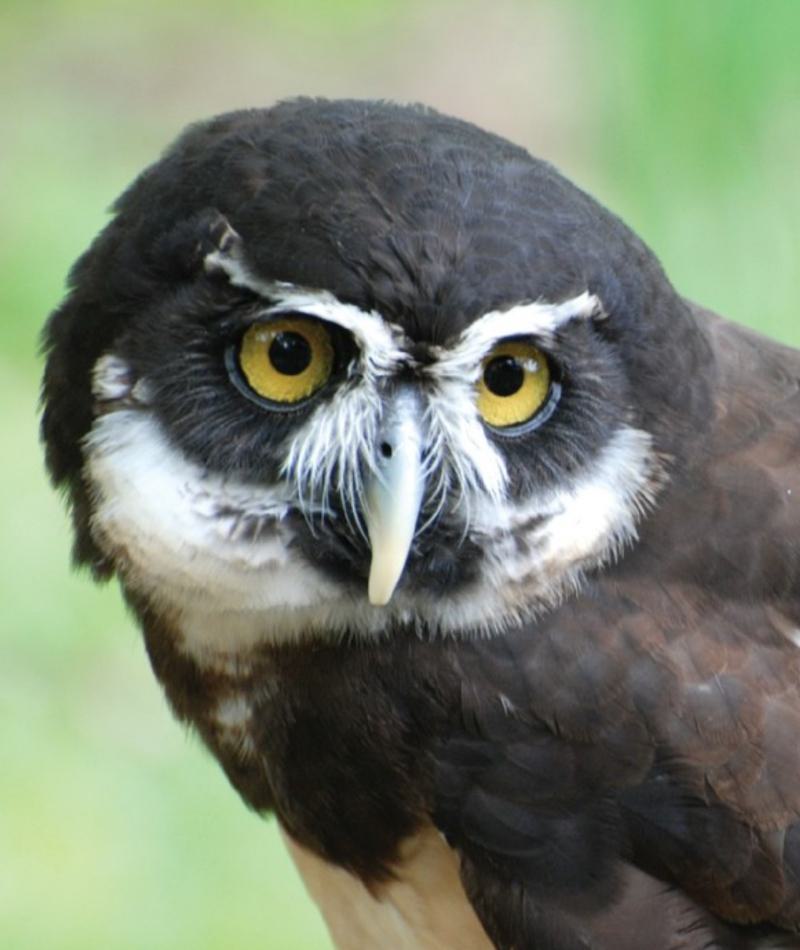
Spectacled Owl
Pulsatrix perspicillata
Did you know?
- The female is larger than the male.
- They are the largest of the tropical owls.
- The spectacled owl is primarily nocturnal, meaning it comes out at night.
- Its favorite foods include small mammals and birds, insects, and bats.
- Their large eyes make them excellent at catching prey.
"Four Eyes"
The spectacled owl gets its name from the pattern of feathers around its eyes-they make it look like it's wearing spectacles!
Birds of a Feather?
Young spectacled owls are mostly white with a dark face mask. They look so different from adults, they were once thought to be a seperate species.
Threat Level
- Unknown
- Common
- Near Threatened
- Threatened
- Endangered
- Critically Endangered
- Extinct in the Wild
Common
The Spectacled Owl is widespread and abundant.
Range
Southern Mexico to Central and northern South America
Habitat
Rain forests and woodlands

We care about spectacled owls
The Saint Louis Zoo supports spectacled owls at the Bird House and Bird Garden.
Find this animal in Historic Hill

SAINT LOUIS ZOO ZONE
Historic Hill
Historic Hill is a lovely stroll through one of the oldest parts of the Saint Louis Zoo. From the 1904 World’s Fair Flight Cage to the Spanish architectural flavor of the 1920s in the Bird House, Primate House and Herpetarium to the finishing touches of our thoroughly modern exhibits, this area of the Zoo has a unique ambiance and a nostalgic history that make it a great destination.

